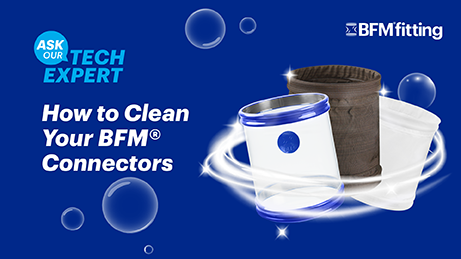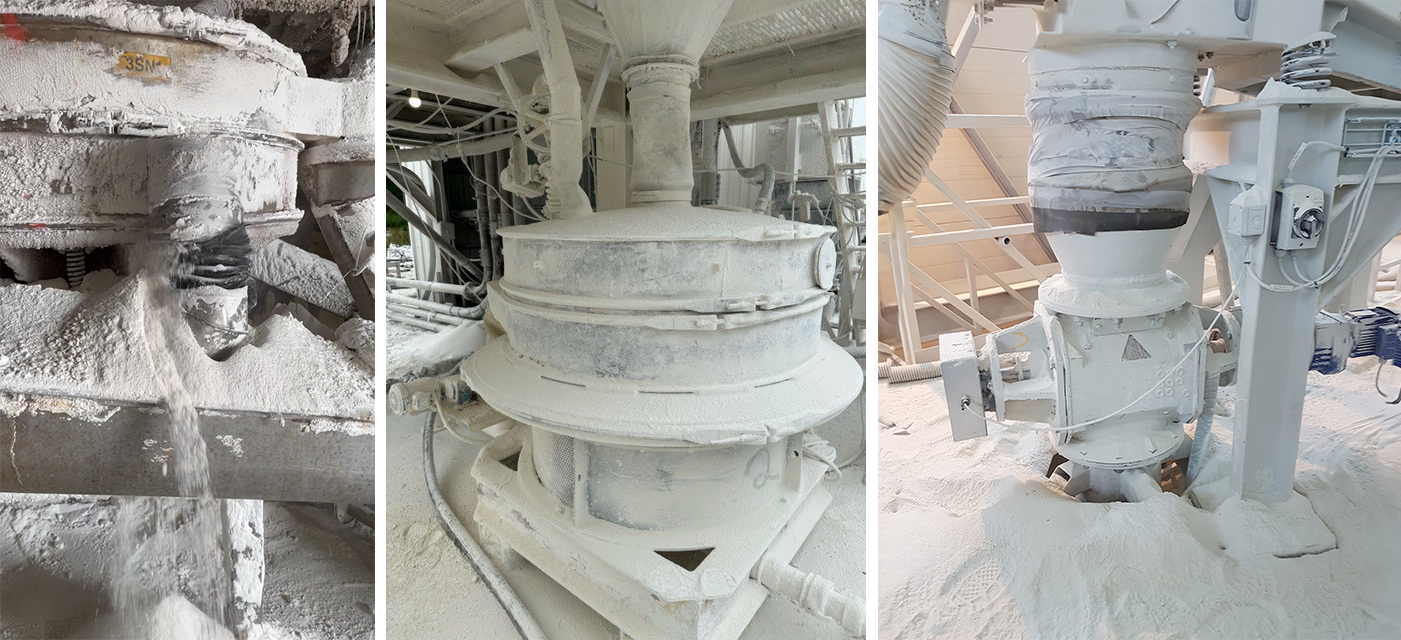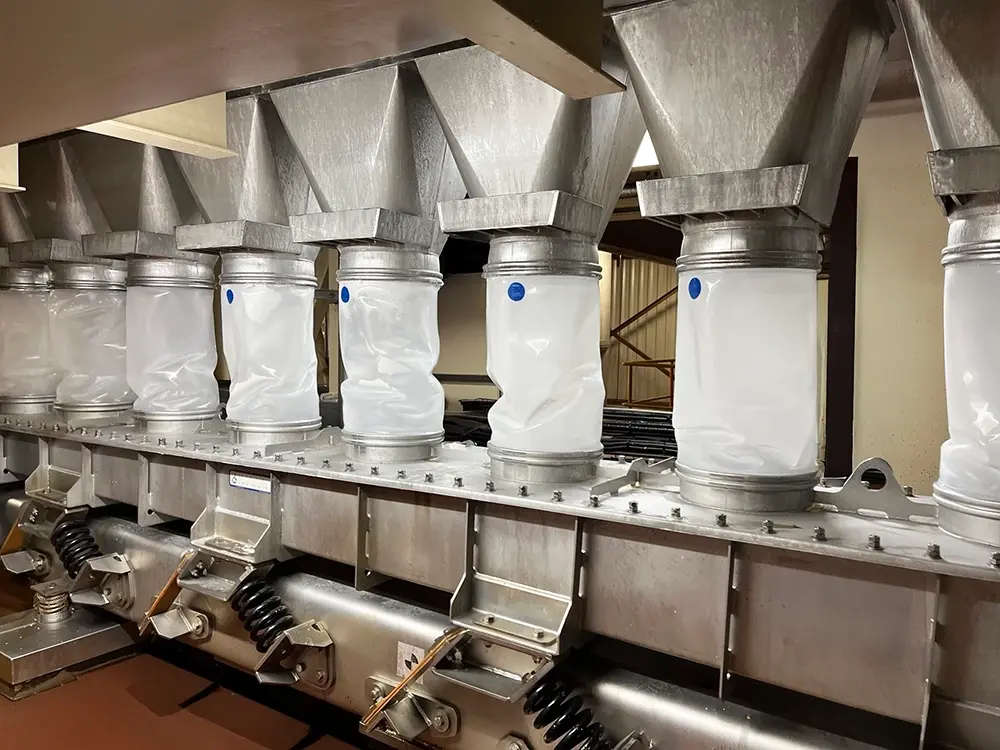Being able to control the airflow into and out of any sealed system in bulk processing plants is key to efficient operation. From pneumatic conveying systems and hoppers to silos and bagging stations — there’s one small component that quietly keeps everything running smoothly: the breather bag, sometimes called a venting sock, de-dusting bags or breather filters.
Its role seems simple: allow air to move in and out of enclosed vessels to equalise pressure and maintain smooth product flow, while keeping dust contained. But when a breather bag isn’t fitted or maintained properly, it can cause a ripple effect of problems — from dust leaks and hygiene issues to unplanned downtime and maintenance headaches.
Why Breather Bags Matter More Than You Think
Every enclosed vessel in a bulk process needs to “breathe.” When material is fed in or discharged, the displaced air has to go somewhere. If that airflow is restricted, pressure builds up inside the vessel, leading to inconsistent product flow, blockages, or even dust being forced out into the surrounding area.
A well-functioning breather bag ensures that pressure equalises safely and cleanly. It allows air to pass through freely while filtering fine powders and dust particles, keeping them inside the system. When that containment fails, the results can be costly: increased housekeeping, contamination risks, potential non-compliance with hygiene standards, and damage to downstream equipment.
The Hidden Problems with Traditional Breather Bags
Despite their importance, traditional breather bags are often treated as an afterthought. Many are still attached using clamps, bands, or screws that require tools to remove and refit. Over time, these fittings loosen under vibration or thermal movement, leading to leaks and dust escaping into the environment. In some cases, the bag even detaches completely.
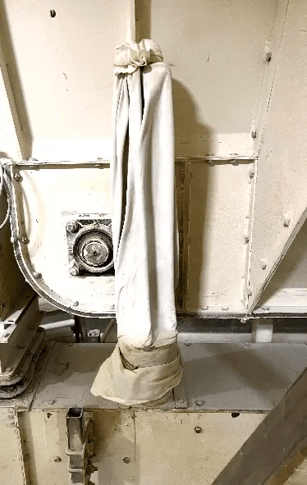
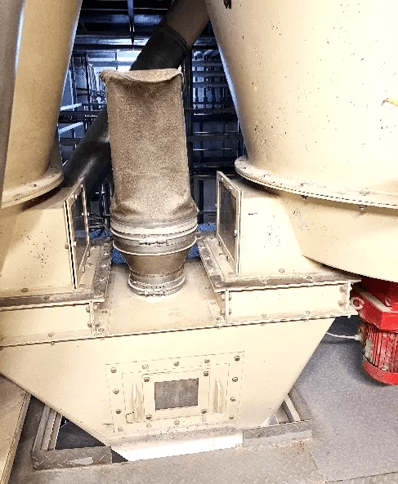
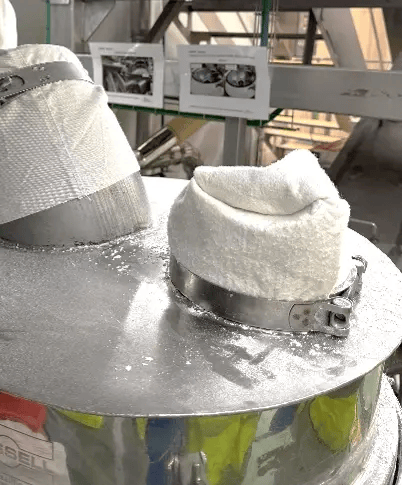
 Maintenance teams also struggle with accessibility. Breather bags are often installed in hard-to-reach areas — above vessels, inside mezzanines, or behind ductwork. If it takes time, effort, or confined-space entry to reach them, cleaning and inspection are frequently delayed. Clogged or damaged bags go unnoticed until they start restricting airflow or spilling dust.
Maintenance teams also struggle with accessibility. Breather bags are often installed in hard-to-reach areas — above vessels, inside mezzanines, or behind ductwork. If it takes time, effort, or confined-space entry to reach them, cleaning and inspection are frequently delayed. Clogged or damaged bags go unnoticed until they start restricting airflow or spilling dust.
In hygiene-sensitive industries such as food, pharmaceutical, and chemical processing, small leaks can have serious consequences.
Dust escape compromises product quality increases explosion risk and adds regulatory pressure. In most cases, the cost of cleaning and rework exceeds the cost of using a properly fitted, hygienic venting system.
Common frustrations with traditional breather bags include:
• Loose or inconsistent mounting causing dust leaks
• Difficult removal and replacement, especially in tight or elevated spaces
• Limited inspection access leading to undetected wear or clogging
• Increased hygiene, safety, and compliance risks
What a Better Breather Bag System Looks Like
 When you talk to experienced plant engineers about what they really want in a breather system, their answers are remarkably consistent.
When you talk to experienced plant engineers about what they really want in a breather system, their answers are remarkably consistent.
They need something that:
• Installs quickly without tools
• Provides a consistent, dust-tight seal
• Uses durable, hygienic materials
• Is easy to remove, clean, and inspect
• Supports fast maintenance turnaround
That’s where the BFM® FM1 Breather Bag stands out. It’s purpose-built to address the pain points of traditional systems — combining simplicity, hygiene, and reliability in one package.
The FM1 Breather Bag Advantage
Made from 100% polyester needle-felt, the FM1 is designed specifically for venting hoppers, bins, and other enclosed vessels. It handles temperatures from -20 °C to +130 °C (up to 150 °C surge) and meets FDA 21 FR 177.2800 and 3A hygiene standards.
 Its standout feature is the snap-fit cuff system, which attaches to a BFM® spigot without tools or clamps, creating a perfect, dust-tight seal every time. This eliminates guesswork, inconsistent tension, and the main sources of maintenance downtime.
Its standout feature is the snap-fit cuff system, which attaches to a BFM® spigot without tools or clamps, creating a perfect, dust-tight seal every time. This eliminates guesswork, inconsistent tension, and the main sources of maintenance downtime.
Cleaning is straightforward: the FM1 can be removed and cleaned with an airgun from the inside or hand-washed with soap and water before air drying. Its robust design also ensures long life in high-vibration environments. The range of available diameters and lengths allows it to be adapted to almost any venting application.
• Benefits of the FM1 snap-fit system include:
• Fast, tool-free installation and removal
• Reliable, dust-tight sealing every time
• Encourages regular inspection and maintenance
• Compatible with hygiene-sensitive applications
Implementation Tips for Plant Teams
When specifying or retrofitting breather bags, it’s important to size them correctly for your process. The air volume displaced during filling or discharge determines how much venting capacity you need. BFM® provides an easy-to-use airflow calculator to help you select the right FM1 configuration for your vessel.
 It’s also good practice to incorporate breather inspection into your preventive maintenance program. Even though the FM1 is simple to remove, it should still be checked regularly for dust buildup or signs of wear. Establishing a standard work instruction for fitting and inspection helps ensure every operator installs it correctly, every time.
It’s also good practice to incorporate breather inspection into your preventive maintenance program. Even though the FM1 is simple to remove, it should still be checked regularly for dust buildup or signs of wear. Establishing a standard work instruction for fitting and inspection helps ensure every operator installs it correctly, every time.
Finally, make sure operators know the early warning signs of venting issues — like product bridging, abnormal pressure readings, or visible dust. Catching these early keeps your system efficient and prevents costly shutdowns.
Small Upgrade, Big Payoff
In high-throughput production environments, small design improvements often deliver the biggest gains. A breather bag that’s difficult to remove, poorly sealed, or undersized might seem minor, but it can be the root cause of dust emissions, inconsistent flow, and lost production time.
By upgrading to a reliable, hygienic, and easy-to-fit solution like the BFM® FM1 Breather Bag, plant teams can dramatically reduce maintenance effort, improve containment, and enhance both operator safety and production efficiency.
If you’re planning your next shutdown or equipment upgrade, take a closer look at your venting systems. A smarter breather connection could be one of the simplest — and most effective — improvements you make this year.
Find out more about the BFM® FM1 Breather Bag here.
